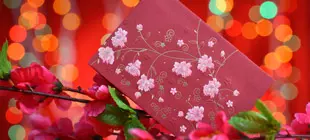The Egyptian tarot appeared for the first time in ancient Egypt. Once the Gypsies then adopted it, it crossed the Mediterranean and, little by little, became popular in other cultures. Some historians even think that the tarot of Marseille may have been influenced by the Egyptian tarot.

Not a lot of knowledge relating to the Egyptian tarot has survived, but experts have been able to piece together how it works. The Egyptian tarot uses astrology and numerology as the basis for its predictions. This divinatory artform helps to answer any questions you might have on any subject you wish. All it takes is to read the hieroglyphs that tell you what direction to take.
Tarot is made up of only 22 cards, including the 7 positive cards (the Nile, the Mammisi, Harpocrates, Anuket, Nut, Constellation, Bennu), the 5 negative cards (Sekhmet, Sobek, the Army, Aker, Apopis), and the 7 neutral cards (the Mastaba, Nefertiti, Hatshepsut, the Scribe, Akhenaten, Baka, and the Sycamore).
Before beginning a reading, it's best to understand each card. It is very important to familiarize yourself with them. Next, try to understand the meaning of the signs and symbols of each card on your own.
Once this stage is completed, you can dive into reading the Egyptian tarot. This printable cartouche was designed to tell you what the general ambiance of your day will be like. This reading is very quick to do every morning. and allows you to start your day off without any questions left unanswered. It's very easy to use: simply turn over a card every morning and then interpret it.
The Cross of Life spread was designed to answer a specific question. It requires a bit more time and preparation than the cartouche but is still one of the easiest, like the Marseille tarot. Start by shuffling and cutting the deck, then draw 6 cards at random and lay them in a cross shape in an orderly fashion. Each card will show you the difficulties and advantages that you will encounter, and then, at the end, you will have a definite answer to your question.
The pyramid spread is even more elaborate. It is used to find out if you will find happiness in love, for example. The Pyramid examines a particular domain (love, health, family, work...) and gives you the keys for succeeding in life. To start the reading, lay out 5 cards in the shape of a pyramid.
The so-called Temple spread is even more complicated. For this spread, deal the cards into three piles of three cards each from right to left. You can do repeated readings in order to go into more detail in any one domain.
The ancient Egyptian tarot gave birth to the Grand Etteila tarot. Greatly inspired by the ancient Egyptian tarot, the Grand Etteila tells the legends of France over 78 cards, which helps in interpreting a reading. The Grand Etteila arose two centuries ago, but the symbols that it uses go back to antiquity and the Middle Ages. The symbols speak for themselves. They use Jung's theory of the collective unconscious, which means that the symbols written on the cards speak directly to us without us knowing why. You will have no problem understanding the meaning of the cards, and it's impossible to get the interpretation of a reading wrong. No matter what question you ask, the Grand Etteilla can give you an answer.
From the days of Napoleon, the Grand Etteila was in frequent use in tarot salons. The Grand Etteila was born thanks to Jean-Baptiste Aliette, who named this tarot Etteila after an anagram of his name (Aliette). name Jean-Baptiste Aliette was a widely recognized clairvoyant in the XVIIIth century. The Grand Etteila is also called the Egyptian Tarot, as it was very greatly inspried by the Book of Thoth.
In Egyptian mythology, Thoth was an ibis-headed god who transmitted the messages of the gods to men. In ancient Egypt, there is believed to have been a Book of Thoth. This tarot brings together the 22 virtues transmitted by the secrets and rites from the time of the pharaohs.
Jean-Baptiste Aliette went many years, thirty to be exact, before creating creating this tarot. He carried out in-depth research in order to transmit the "divine word". He had a mystical view of the world and its phenomena, which makes for very precise answers.
This tarot was inspired by the Marseille tarot in the way it works but contains far fewer cards. The Grand Etteila has only 78 cards, made up of 56 minor acana and 21 major arcana. Card 78 is Madness ( the equivalent of the Fool in the Marseille Tarot), and is a card on its own.
The Grand Etteila offers very precise answers. The minor arcana will give a more precise date for an event. Many card readers use the Grand Etteila for its precision. It is linked to Egypt's mystical past and rewrites the sacred mysterious of the past that still effect our daily lives in more easy-to-understand language.
Every card is numbered and tells a specific tale from your collective history. Thanks to the short text on each card, you can familiarize yourself better with the cards. This way, it will seem less abstract.
To start a reading, it would be best to shuffle the cards then cut the deck with your left hand while thinking about the question you'd like to ask. Next, count out 5 cards, then draw the 5th one. Redo this 4 more times. In the end, you will have 5 cards laid before you. The first and second cards represent the past. The third card represents the present, your state of mind at the moment, or the consultant's. The fourth and fifth cards speak to the future. They are the ones that will give you the answer to your question.






